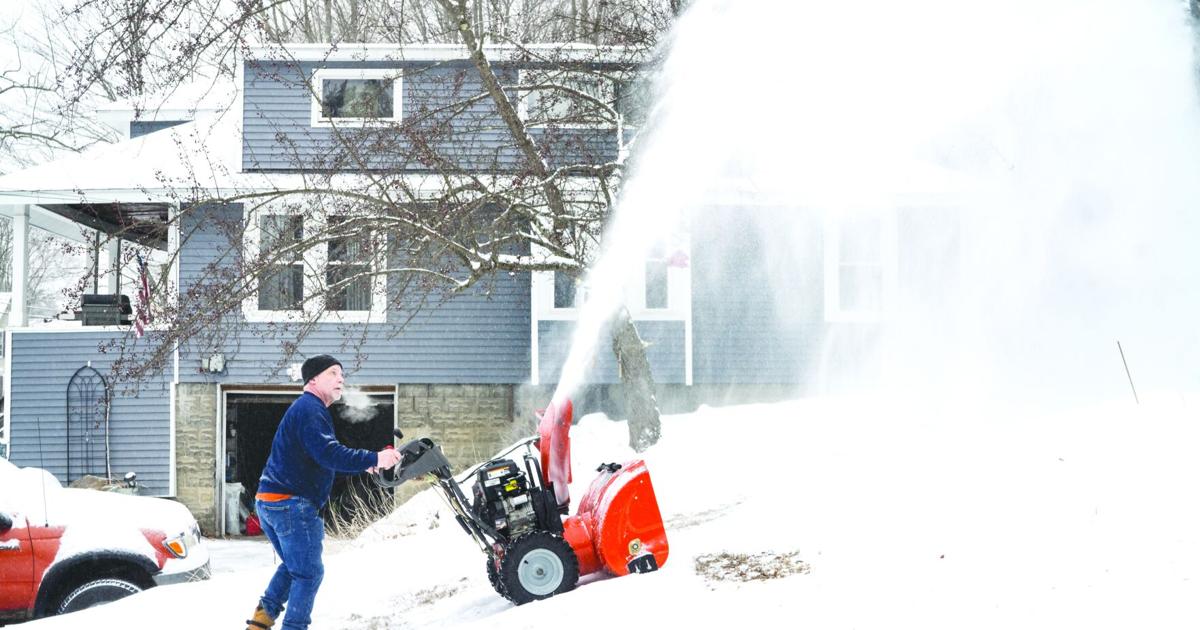New Hampshire’s snowpack is shrinking. Researchers are still uncovering the scope of what it means.
By By Molly Rains N.H. Bulletin,Molly Rains N.h. Bulletin
Copyright keenesentinel

New England residents know that snow is disappearing from our landscape, and scientists have proven that climate change is to blame. But the effects of snowpack decline go far beyond what’s visible, and researchers working in the forests of New Hampshire and the Northeast are learning more about just how far the phenomenon stretches across seasons and landscapes.
Their findings reveal how much tracking snow can tell us about the health of our forests and our world, and what is still to learn.
The average amount of snow that accumulates on the ground throughout the winter season, or snowpack, is shrinking from year to year across the Northeast. While data has captured that effect (and linked it to human-caused climate change), many who live and recreate in the region have noticed it in their own lives — including the researchers who later took up the matter in their work.
“I grew up cross-country skiing with my family,” said Emerson Conrad-Rooney, a doctoral student at Boston University whose work focuses on the effects of climate change on northern forests. Conrad-Rooney, who grew up in western Massachusetts, said the places they had grown up skiing through the winter were, in recent years, open only a handful of days all season long. “That’s been kind of separate from this research I’m doing, but just something that me and my family have seen … We’re, I think, definitely feeling that change,” they said.
Eric Kelsey, a meteorologist and researcher at Plymouth State University, also grew up an enthusiastic winter recreator in Nashua. A love of snow and weather led Kelsey to learn more about the integral role of snowpack to the water cycle. But as he read more, Kelsey was struck by the relative lack of cohesive, long-term snowpack data, especially compared to other weather datasets tracking things like daily high and low temperatures and rainfall.
“We just don’t have a climatology of snowpack — that was surprising to me,” Kelsey said.
The problem, Kelsey said, was not necessarily a lack of data. For more than a century, people across the Northeast have logged information about snowfall, from dam operators attempting to predict how snowmelt would affect their rivers to farmers and ski slope proprietors.
Most tracked snow depth and snow water equivalent (the amount of water contained in that snow, a measure that fluctuates with snow density). Their observations, taken as a whole, are a rich collection of information about snowfall in New England, Kelsey said. But the records were also scattered and disparate, making it difficult for scientists to unlock the information they contained.
Now, Kelsey and Plymouth State graduate student David Zywiczynski are halfway through a National Oceanic and Atmospheric Administration grant-funded effort to unify and clean that data, which includes measurements taken over yearslong periods from more than 400 sites. Then, they hope, scientists will be able to use it to make sense of long-term patterns in local snowpack, from general decline to years of snow drought — or abnormally low snowfall conditions.
Because snowpack plays an important role in replenishing streams, lakes and aquifers when it melts each spring, a tool to identify snow drought with more certainty could help forecasters anticipate the dry conditions that will likely persist later in the year, Kelsey said. The “snow drought index” Kelsey and Zywiczynski are working on to facilitate that may be the first tool of its kind in the nation.
As historic data is put to work at Plymouth State, elsewhere in New Hampshire, scientists are tracking ongoing changes in forests as they unfold.
Just beneath Mount Washington in Pinkham Notch, Appalachian Mountain Club Senior Scientist Georgia Murray oversees the collection of daily snowpack depth and snow water equivalent measurements. Data collected in the notch and above at the Mount Washington Observatory stretches back to the 1930s, Murray said, constituting one of the longer sets of continuous snowpack observations available in the region.
Measurements from the two relatively close sites are often very different on the same day, highlighting how difficult it can be to assess snowpack, Murray said. Unlike rain, snow blows around once it falls, clearing off some areas completely and piling up in others. Having data from as many sites as possible is desirable for a more comprehensive understanding, Murray said, so she also works to encourage citizen scientists to measure and submit snowpack data across the region through a smartphone app.
“It’s complex with snowpack, because you have, you know, nooks and crannies across the mountain, and so you have so many ways that snow is distributed differently. Having citizen science data fill in the gaps is something we really value in the mountain ecosystem, where we can’t be everywhere,” Murray said.
Citizen science data also helps keep track of the downstream effects of snowpack decline, including its impact on plant life. Plants rely on natural cues to time their life cycles; when some cues, like the presence of snow, change while others, like day length, do not, they may be negatively impacted, Murray said.
“In climate change, there can be these mismatches of synchronicity,” she said.
Furthermore, as snow melts in spring, the water it releases carries nutrients through the soil, making them more available to the roots of hungry and thirsty young plants. But data shows that the timing of snow melt is changing, too, starting earlier and lasting for longer. Murray hopes citizen data will help shine a light on what that could mean for White Mountain plants, from delicate spring ephemeral wildflowers to alpine trees.
“The snowmelt timing has a strong impact in the spring, and can have a ripple effect over the growing season,” she said.
Understanding those and other ripple effects of snowpack decline is crucial to making informed predictions about what the future might bring for New England, researchers said.
Pamela Templer, chair of the Biology department at Boston University and a researcher who has studied northern forests for more than two decades, established a set of three research plots at Hubbard Brook Experimental Forest, in the White Mountains, about 10 years ago. The goal of the study, entitled “Climate Change Across Seasons Experiment,” or CCASE, was to assess how seasonal changes play off each other in yearly cycles.
Before that study, researchers had shown that in summer, temperate forests experienced some positive effects from growing seasons that were stretching longer, Templer said. Separate studies, including in Templer’s own work, had revealed the negative impacts on temperate forests from warming winters. But Templer wanted to assess those two phenomena together.
“We didn’t know at that point what the net effect of those two changes in climate were on the forest,” Templer said.
To do so, Templer and her team — including Conrad-Rooney and “a village” of other researchers — simulated the freeze-thaw cycle, which can occur in the forest floor when it is not protected by an insulating layer of snow, by removing snow in some plots and heating the ground before allowing it to re-freeze. Precise measurements of the trees within the plot, taken over the 10 years the study has run so far, tracked the forest’s growth and the amount of carbon it was storing away over that period.
The work is a demonstration of one of the many ways snowpack decline can add stress into an ecosystem, said Kelsey, who was not involved in the study.
To a tree, damage from repeated freezing and thawing “is, you know, like getting a cut on your finger,” Kelsey said. “It hurts, it will take some resources from your body to heal it, that could be doing other things … And as we know, if there’s too many stressors on a tree, it will die. So this is just adding another stressor to the trees. That’s not good.”
Ultimately, Templer, Conrad-Rooney, and researcher Andrew Reinmann concluded in a study published this July that the benefits to trees from longer growing seasons were outweighed by the damage those trees suffered from repeated freeze-thaw cycles in the winter. That finding, they said, reveals that previous models projecting forests’ role in helping sequester carbon may have overestimated their role in absorbing greenhouse gas.
“If we think that forests are actually storing more carbon than is actually happening, then that means that, maybe, more carbon would be going into our atmosphere than we realize,” Conrad-Rooney said.
This realization has implications for scientists’ ability to model ecosystem changes into the future. It could also inform land conservation decisions, Templer said.
“We need an accurate accounting,” she said. “If we’re going to use forests as nature-based solutions to climate change in terms of sequestering carbon, then we need to know how much they’re sequestering.”
Researchers expect that as they continue to examine historic and current snowpack data, more effects and ripples of snowpack decline will emerge.
From its role in keeping lakes cool through the summer to protecting the landscape from wildfire, snow impacts the water cycle all year long, Kelsey said. And — as is evident both in the origin of the field’s data and its implications — the study of snow brings together many interests, including those of industry, agriculture, tourism, homeowners with wells, and more.
“It touches our lives in so many ways,” Murray said. “… We hope that people see the science that we’re doing, so that they can understand what’s happening, and how it links to their lives and the outdoors.”



